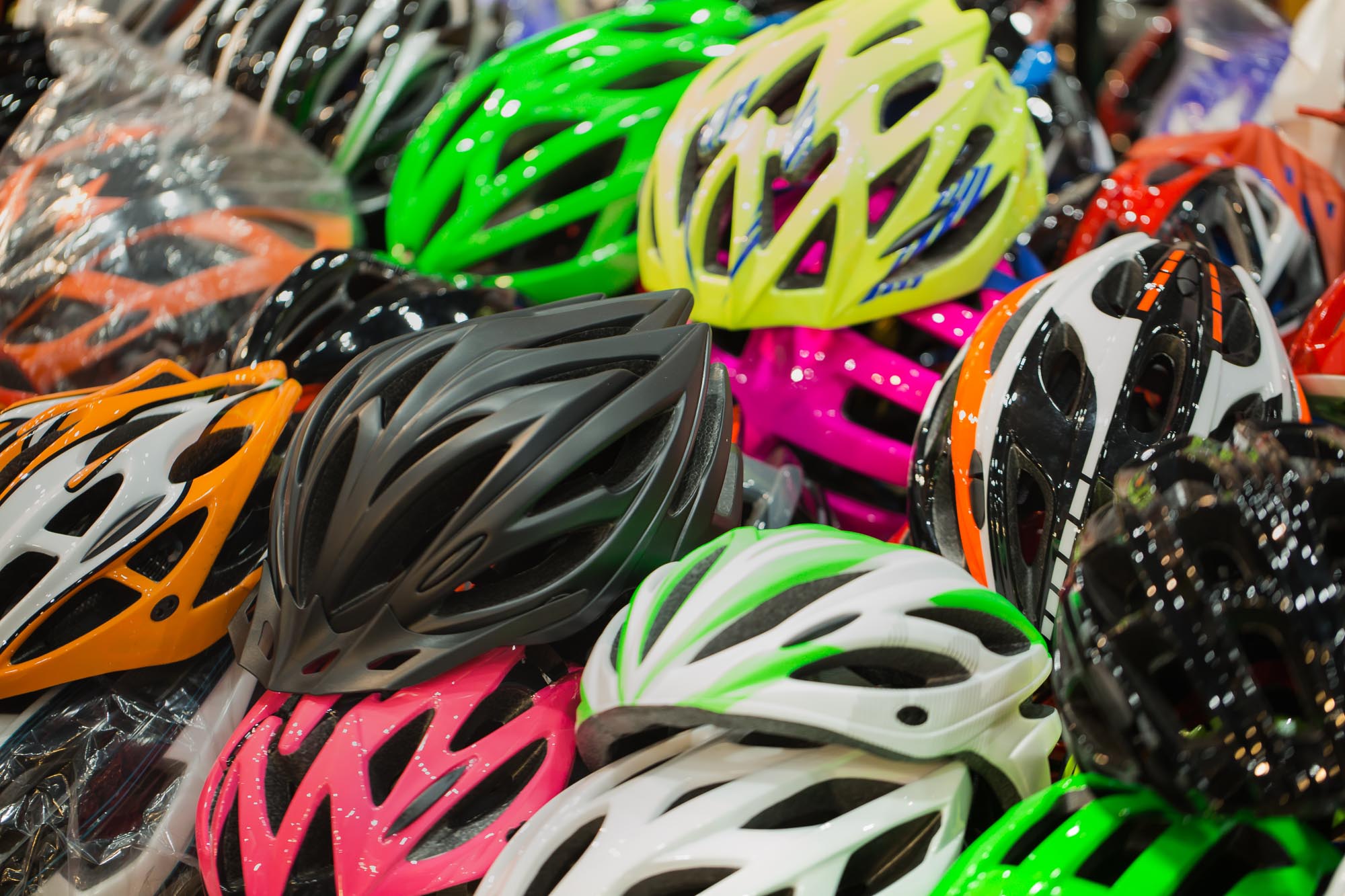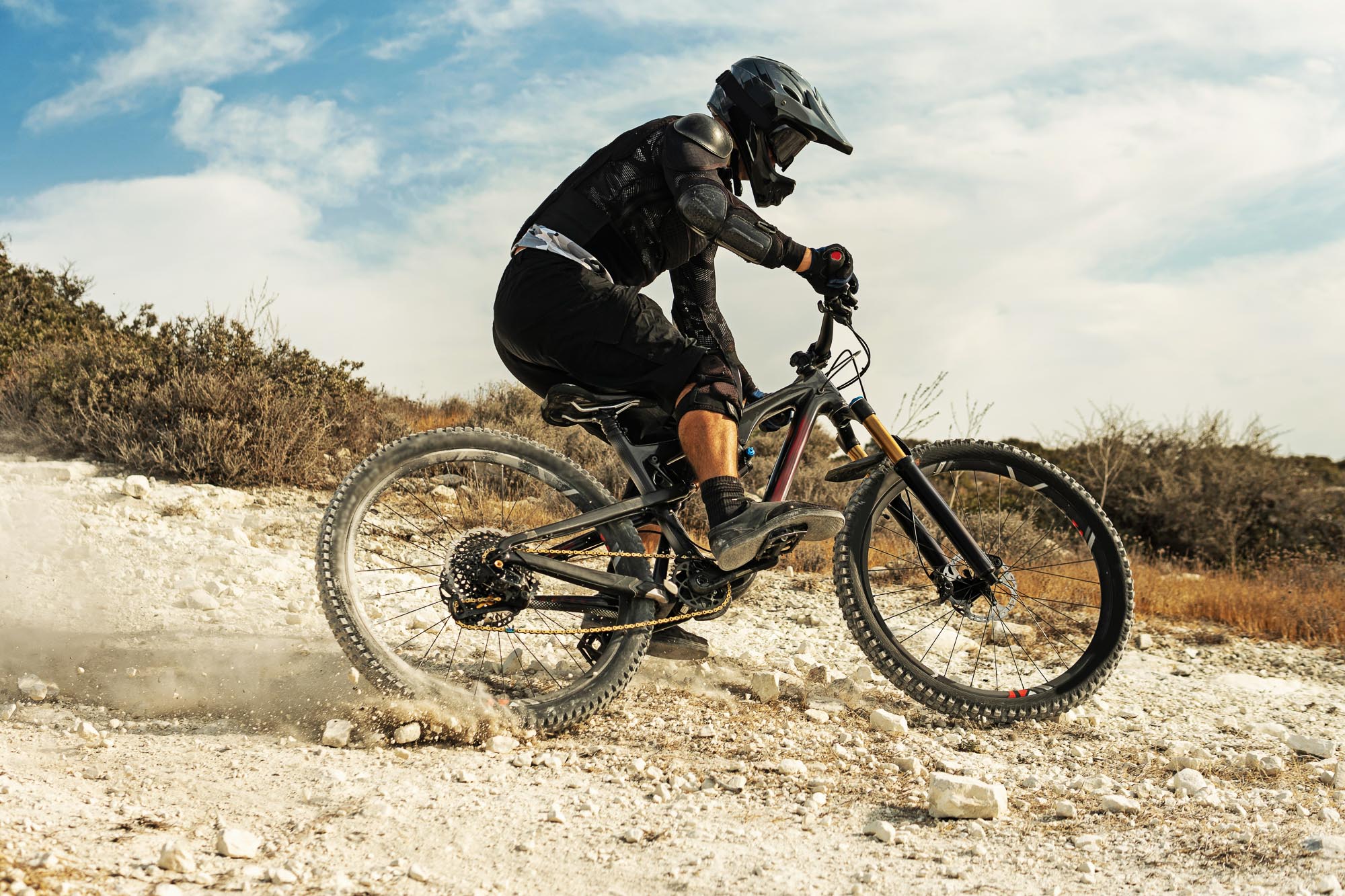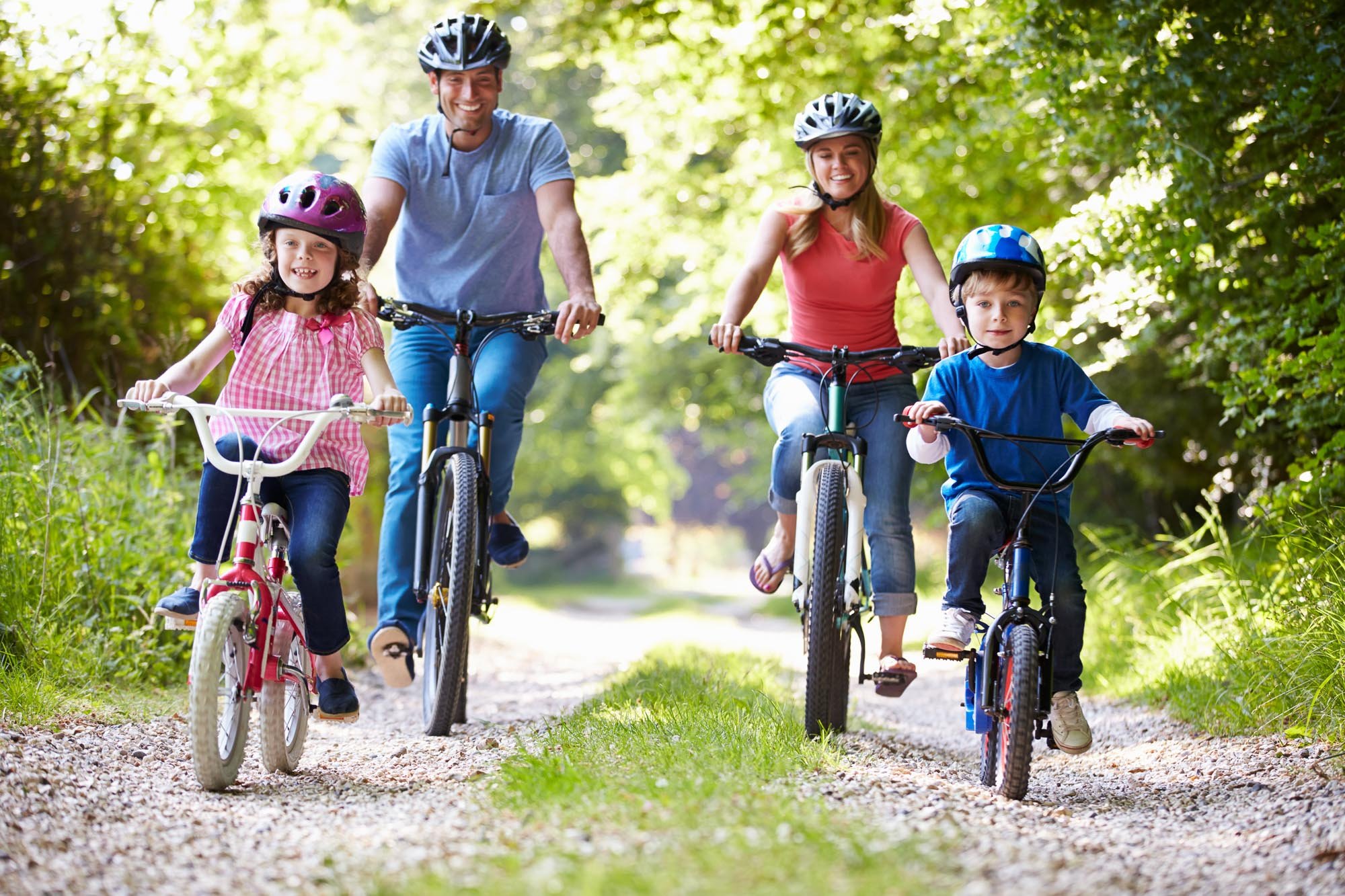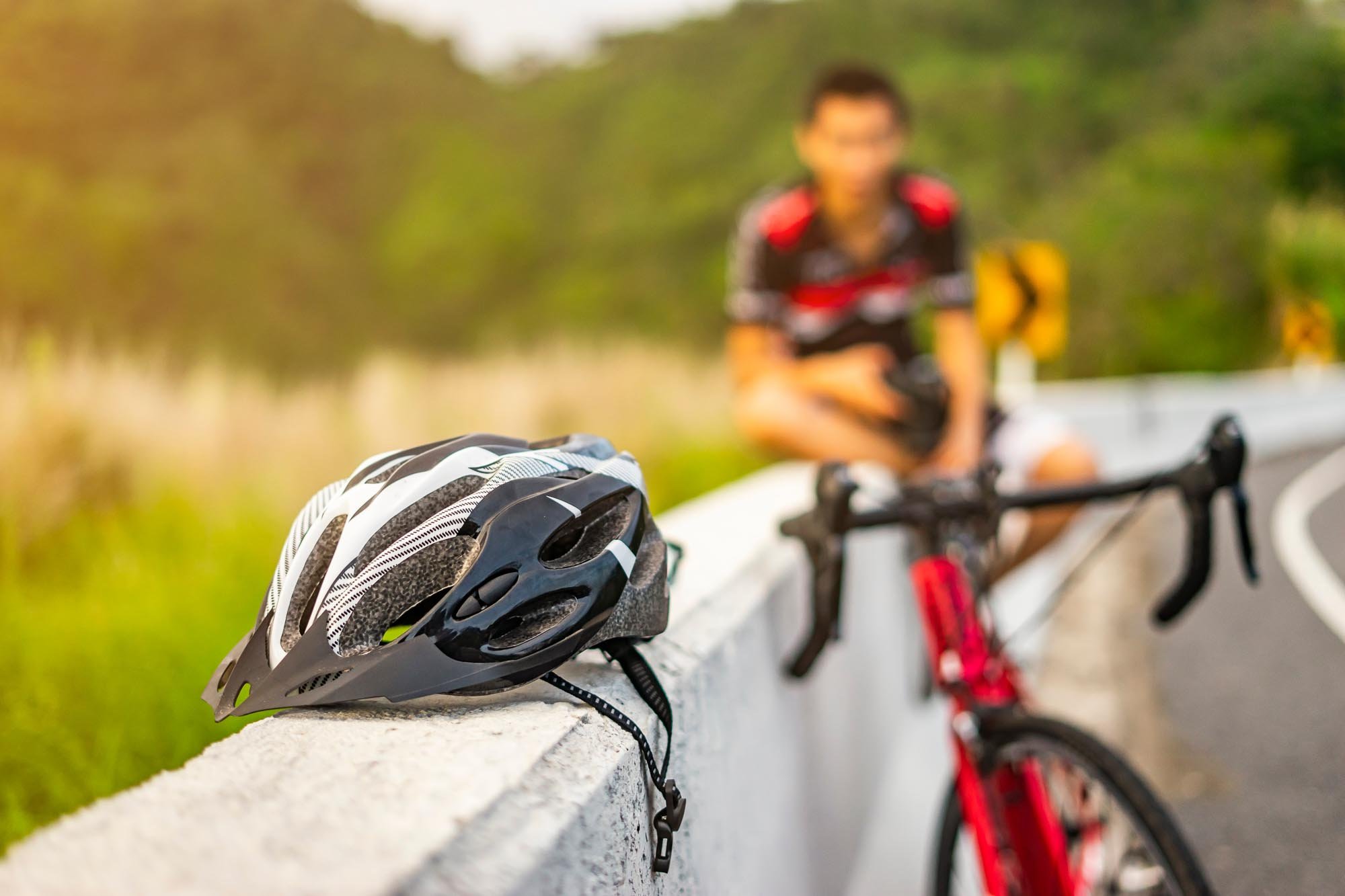The days when only professionals wore bike helmets are long gone. Nowadays, wearing a helmet is a standard, and it's rare to see someone cycling without one. Bike helmet saves lives. Head injuries caused by crashing even at minimum speed can be fatal.
You have to pick a helmet according to its type and size, so you get the most out of its protection.
How to pick the right type of helmet?
First, check if the helmet meets certified safety standards – choose only from the ones that hold CE EN 1078 a certificate.
Other key specifications to consider:
- weight,
- ventilation,
- level of protection,
- extra features and functions.
These parameters differ from one type of helmet to another, based on what discipline of cycling they're used for. The only variation between helmets for men and women are the colours, otherwise all the parameters are basically the same.

Urban helmets
If you use your bicycle to get around the city, for shopping or to meet friends, go for an urban helmet.
These helmets feature more elegant design, harder outer shell and enough side and back protection.
They usually come with integrated rear light or they allow attaching an external one. Some also have a visor to protect your eyesight.
Recreational helmets
Whether you cycle on the road and in the forest, check our selection of recreational helmets – they're decently ventilated and offer enough side and back protection. Ventilation holes are covered by mesh against insects, and helmets tipically feature integrated light for improved sight.
Road bike helmets
If you love fast riding on a road bike, then you need road bike helmets which are the lightest, have the best ventilation and aerodynamic design. However, they offer lesser side and back head protection.

MTB helmets
Helmets for mountain biking offer better side and back protection, they also have a fixed visor that protects against the sun and twigs.
They're heavier and less ventilated, but the level of protection is much higher. If you ride on unpaved roads, rocks and branches, choose the one that'll protect you well.
Do you love adrenaline? Do you ride downhill or enduro? Pick a full-face helmet with maximum protection. It protects the whole head (including the face and the jaw), it is heavier but in critical moments a few extra grams don't matter at all.
BMX helmets
These helmets are mostly for riders in bike parks, skateboarders and inline skaters.
They don't have almost any ventilation holes – making them heavier – on the other hand, they offer great head protection, which comes handy when practising new tricks.

Smart helmets
Are you a fan of the latest technology? Then have a look at the category of smart helmets. Bluetooth, built-in speakers or the ability to communicate with other people wearing the same helmet – just to name a few perks of these helmets.
Check out Sena R1 and your riding experience will never be the same again.
Kids' bike helmets
Little cyclists need to wear helmets too. Even a child aged 1-3 years old, sitting in a child bike seat, needs a head protection. Depending on the baby's head circumference, you have to pick from XXS sizes of helmets. For example, WeeRide Toddler, which is suitable for kids from 6 months and thanks to a dial in the back it can be adjusted to fit a child up to 3 years old.
Kids' helmets are suitable for children from 1 to 9 years old. They're smaller, have a shorter back side and can be used for balance bikes or first bicycles too. Kids aged 10 and older wear adult-sized helmets.
Muziker tip:
Despite all the differences between the types, all helmets should have a removable inner lining which can be washed. Reflectors are also handy.
Seasonal helmets
For colder weather, helmets with fewer ventilation holes are better. For even better thermal comfort, many cyclists wear multipurpose gaiters or beanies.
In summer, you'll appreciate a lighter, well ventilated helmet in bright colours.
A group of mountain bikers, each wearing a helmet
How to choose the right helmet size?
Getting the proper size affects not only the wearing comfort, but also the level of protection.
Most of the helmets feature a dial that can adjust the size. According to its range, helmets are divided into size categories, labelled by letters – from XXS (smallest) to XXL (biggest).
Measure the widest point of your head
The key factor is the head circumference that can be measured with a soft tape measure. You have to measure the widest part of the head – around the temple bones – approximately 25 mm above the eyebrows and 15 mm above the ears. In case you're in between two sizes, it's always better to get the bigger one.
Man gets his head circumference measured, so he knows what size of helmet he needs.
How to find out whether the helmet fits correctly?
Finding the right type and size of the helmet is just the beginning. From hundreds of different brands and models, you have to pick the one that “fits like a glove”, because only then it'll protect you properly.
- The helmet needs to fit tightly on your head, so it doesn't move around on its own. Put on the helmet, dial the retention – but don't buckle the straps. Shake your head in all directions - the helmet must not move freely.
- Buckle the straps under your chin, with enough room for two fingers between the chin and the straps. That way, it'll be tight enough, but it won't choke you when looking down. The straps must not hurt your ears.
- The helmet should sit on your head horizontally and cover about half of your forehead. It'll protect your forehead, top, and crown of your head.
Helmet materials
Most of the helmets are made by moulding expanded polystyrene (EPS) foam in the polycarbonate shell. This method is called "in-mold".
Some helmets come with a MIPS system that eliminates rotational impacts in a crash. It's featured in a road bike Abus Macator Mips helmet or in the MTB BBB Dune Mips helmet.
Helmet's life expectancy
The life of a helmet ends once it fulfils its mission – protect your head in a crash. Even if the damage on the helmet is not visible.
Helmets are designed so that the material absorbs the impact, causing irreversible damage. It won't protect you in case of another crash. Therefore, replace your helmet immediately after the accident.
The helmet isn't invincible, even without experiencing a single crash. Due to the gradual degradation of the material and the influence of weather conditions, its absorption ability deteriorates. Manufacturers recommend to change helmets periodically, some suggest every 3 years, others 8. A general agreement says every 5 years
Don't take your safety lightly and enjoy the bicycle ride with a high-quality helmet.
 Musical Instruments
Musical Instruments



 Water Sports
Water Sports




 gb
gb




